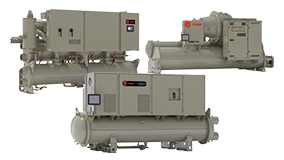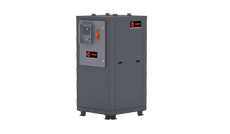Thinking Differently About Virtual Power Purchase Agreements (VPPA's)
November 14, 2018
What’s in your sustainability playbook? Purchasing renewable energy from a local provider, reducing overall energy consumption and installing distributed renewable energy sources, such as solar panels or wind turbines, should all be considered as part of a holistic approach to energy and environmental impact. But more and more large multinational corporations, universities, and municipalities are finding they can gain serious sustainability yardage in one big play with a virtual power purchase agreement (VPPA)
According to the Navigant® research, these type of projects by corporate buyers in North America are expected to reach 2.7 GW and $3.1 billion in 2027.[1]
If you’re new to this subject, a virtual power purchase agreement (VPPA), also called a Contract for Differences, is a long-term contract associated with a renewable power generator that is remote from your location. As the purchaser, your company agrees to pay a fixed price for every megawatt hour generated. However, you won’t physically receive the energy; instead, the generator sells the power into the wholesale market. Your company receives or sends periodic settlements, depending on whether your contracted price was above or below the wholesale price.
Our own Ingersoll Rand Center for Energy Efficiency and Sustainability worked with the Trane® Energy Supply Services team to enter into a virtual power purchase agreement. We replaced 32% of the company’s energy use in the U.S. with green energy practically overnight. (Meet Scott Tew, Executive Director of CEES – Ingersoll Rand)
You’re betting on getting paid. Your company can use the settlements received in any way it sees fit; to offset escalating local electric prices, or to fund other sustainability projects, for example.
There are other benefits, as well. You can claim Renewable Energy Certificates for your project for helping to put more renewable energy capacity onto the grid. If a company operates multiple locations, or doesn’t have good renewable energy options locally, VPPAs can scale up sustainability in a hurry.
Considerations for VPPA’s
There are many considerations that come in play when developing a successful VPPA. This is where Trane is laying new groundwork. We’ve developed a unique model that quantifies business objectives and factors them into a complex evaluation equation that goes beyond sustainability, and deeper into the business strategy.
For example, a client may want to support economic development in a financially depressed region. Or they may want to attract and retain top talent by gaining visibility in hot recruiting areas. Or a client may want to engage in a high-visibility project that will catch the attention of ESG (environmental, social and governance) stakeholders. We’ve customized the VPPA evaluation process for a wide range of priorities.
Sound complicated? It is. VPPA contract reviews can be risky business, requiring savvy analysis and negotiation. Careful consideration must be given to the project’s location, future pricing projections and volatility analysis, and contract length—as well as what it can do for your brand.
We’re looking differently, deeply and more holistically at the way energy is used and purchased. We’re helping our clients implement winning solutions in which business goals and sustainability go hand in hand. It’s innovative thinking like this that keeps Trane a leader in energy solutions. After 50-plus years, we’ve got an unbeatable strategy. Contact us if you’d like to know more.
Trane and the Circle Logo are trademarks of Trane in the United States and other countries. Navigant is a trademark of Navigant Consulting, Inc. All trademarks referenced are the trademarks of their respective owners.
© 2018 Trane. All Rights Reserved.
[1]Navigant Research, Corporate Utility-Scale Offsite Renewable Energy Procurement Solutions
Procurement of Utility-Scale Solar PV and Wind Power by Large C&I Energy Users: Global Market Analysis and Forecasts Q2, 2018

































































































